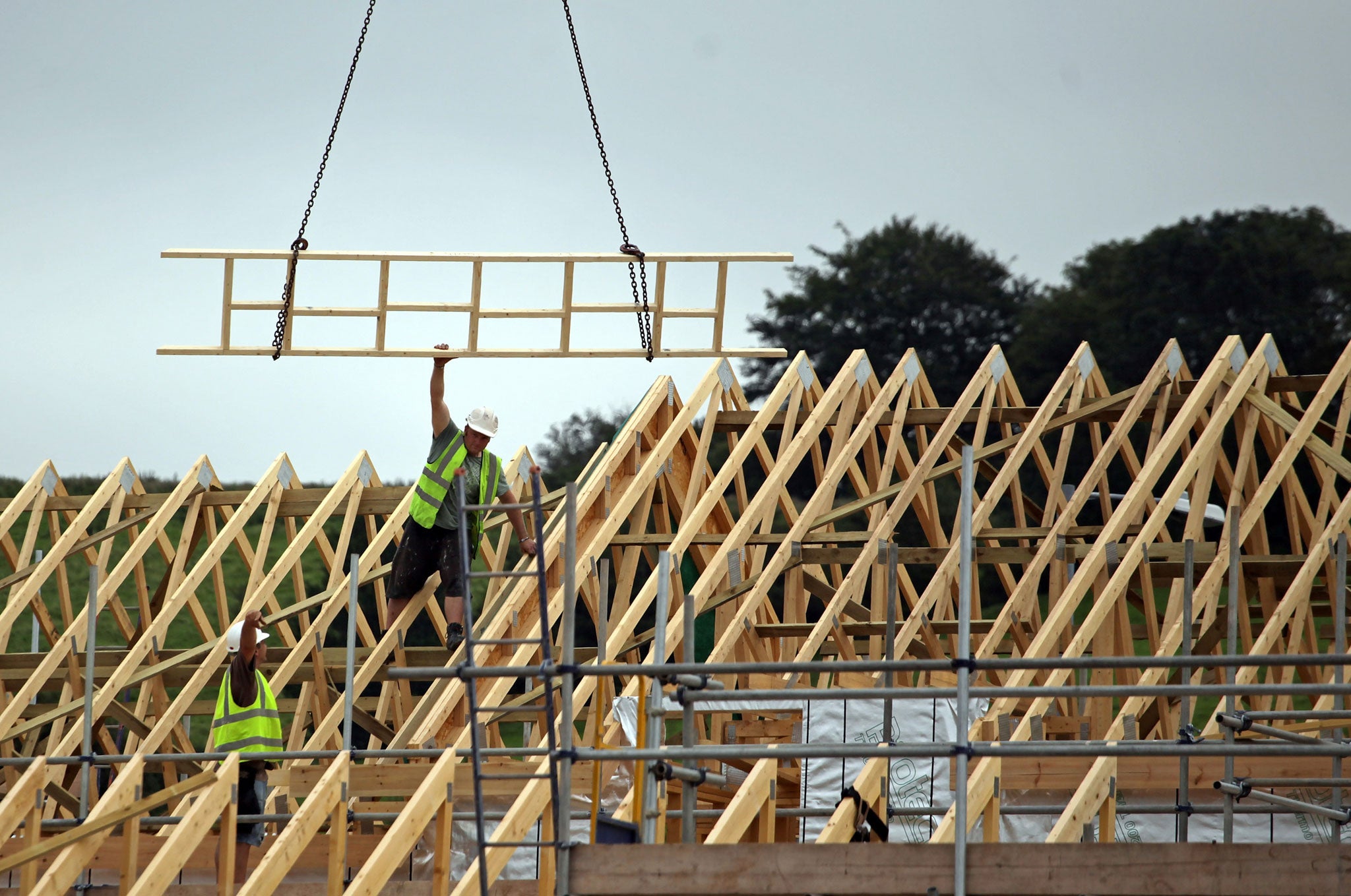How to end the housing crisis: forget sentimentality and build on the green belt
Since the Coalition came to power, the average cost of a home in London has surged from £329,133 to almost half a million pounds


It’s official: Britain has a housing crisis and everyone agrees that something must be done. Just look at last week’s rally in London to highlight the national shortage of affordable homes, which saw speakers from across the political spectrum join forces to lambast the lack of new properties.
Nigel Farage, Caroline Lucas and film director Ken Loach were there, shoulder-to-shoulder with the three mainstream parties in protest at the outrageous lack of homes.
Talk, of course, is cheap – unlike soaring property prices. British house prices have grown faster over the past 40 years than in any other major economy. Since the Coalition came to power, the average cost of a home in London has surged from £329,133 to almost half a million pounds.
The reason is simple: for decades, successive governments have failed to build enough homes. It is a basic equation of supply and demand, made worse by much new housing being built in the wrong places, and the national propensity to carve up properties with the result that we end up living in some of the smallest homes in the western world.
Since everyone agrees there is a crisis and almost everyone agrees on its cause, this should be comparatively easy to fix. All we need do is build many more homes, which has the added bonus of creating lots more jobs – not just in construction, but also kitting out them out with kitchens, curtains and carpets. Yet last year less than half the number of new homes needed in England to keep up with demand were built. The Government’s response is to help first-time buyers, which makes short-term political sense but is long-term insanity since it uses public debt to fuel demand and help pump up prices.
The Coalition deserves some credit for seeking to reform the planning system, while running into predictable protests from self-satisfied pressure groups. Now, as the election approaches and this issue rises up the political agenda, parties are suddenly setting out ambitious plans to build hundreds of thousands of new homes. Yet all those earnest policy documents being printed to woo voters will turn out to be largely fictitious given the lack of political will to drive through sufficient development.
But there is a simple solution to this crisis: to permit building on green belt. Cue howls of outrage, since so sacred is this wartime legacy that such a suggestion sounds about as acceptable as dining on a slice of dolphin. Just last week a scheme to build 102 new homes in York was blocked by government inspectors on the grounds that it would disrupt the green belt. In London, where the country’s housing crisis is most acute with 1,000 new homes needed each week for its rising population, mayor Boris Johnson has ruled out building on such land for at least a decade.
Britons believe two-thirds of their country has been concreted over when in fact less than one-tenth of England is urbanised – and half this is green space such as gardens. Paul Cheshire, professor of economic geography at the London School of Economics, points out that green belts alone cover one and a half times as much land as all of England’s towns and cities combined. He calls it a subsidy for “horseyculture” and golf; the result is more land in Surrey covered by golf courses than housing.
Green belts were devised to stop urban sprawl and to prevent towns from engulfing neighbouring villages. Neither argument makes sense now in London, left strangled by a giant donut of protected land that drives development deeper into surrounding countryside and forces commuters to live further from their work in their search for affordable property. Yet within the capital’s boundaries alone, there is enough green-belt land to build 1.6m houses.
Towns with the biggest affordability gap between earnings and house prices are invariably being choked by green belt. That sweet term conjures up bucolic visions of green and pleasant landscapes. The reality is rather different. A majority of green belt is used for agriculture, often so intensive, industrialised and over-sprayed with pesticides that it has less biodiversity than is found in city back gardens and communal parkland. It also includes things such as airports, quarries, railway embankments and sewage works.
How ironic that scrappy brownfield sites can be richer with wildlife than sacrosanct green belt. Yet politicians of all persuasions repeatedly insist – as they did at the London rally – that our huge housing shortages can be solved by utilising brownfield sites. “I am sentimental about beautiful parts of this country,” thundered Nigel Farage. “Building on brownfield and turning bad into good is better than turning good into concrete.” This typifies the deluded national outlook – and it pushes up prices still further since the best sites have been used already while most of those left are costly and difficult to develop.
No one is suggesting building on the many beautiful bits of green belt that merit protection. But as Prof Cheshire says, this country is turning homes into luxury assets similar to art works and gold, rising demand forcing up prices at a time of near-fixed supply. Until politicians and voters accept not just the scale of the crisis but the obvious solution lying under their noses, this will problem not be solved – to the detriment of Britain’s economic and societal well-being. We should focus on the future, not pander to archaic myths from the past.
Join our commenting forum
Join thought-provoking conversations, follow other Independent readers and see their replies
Comments
Bookmark popover
Removed from bookmarks